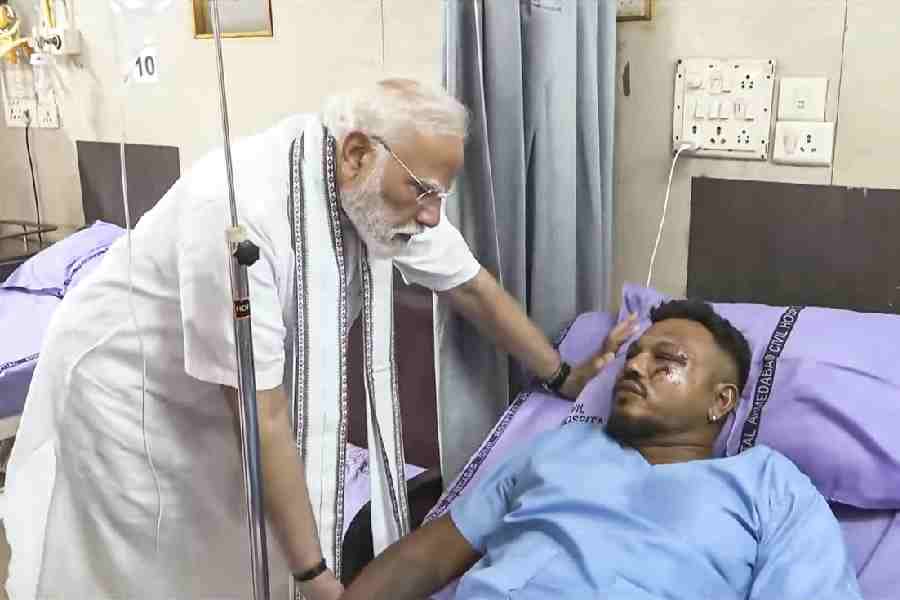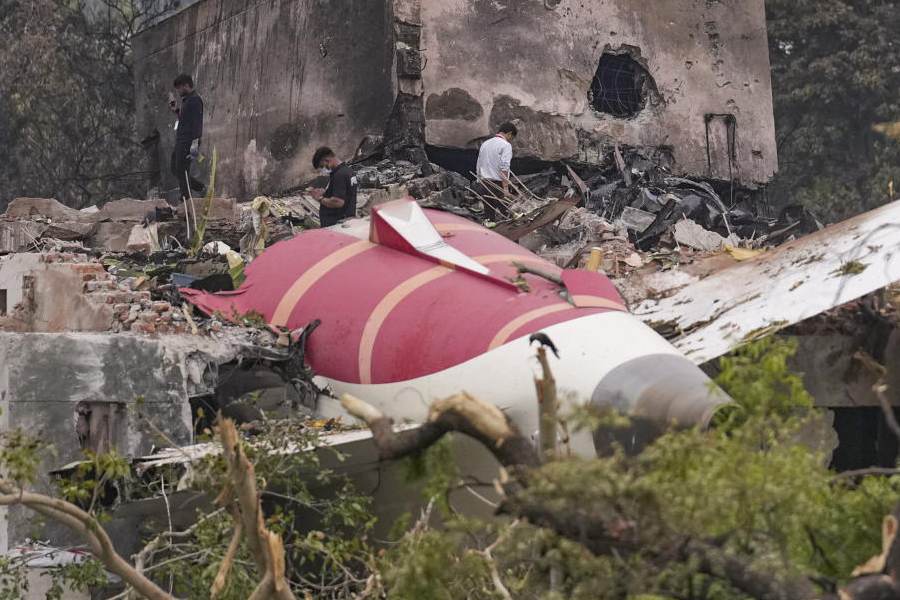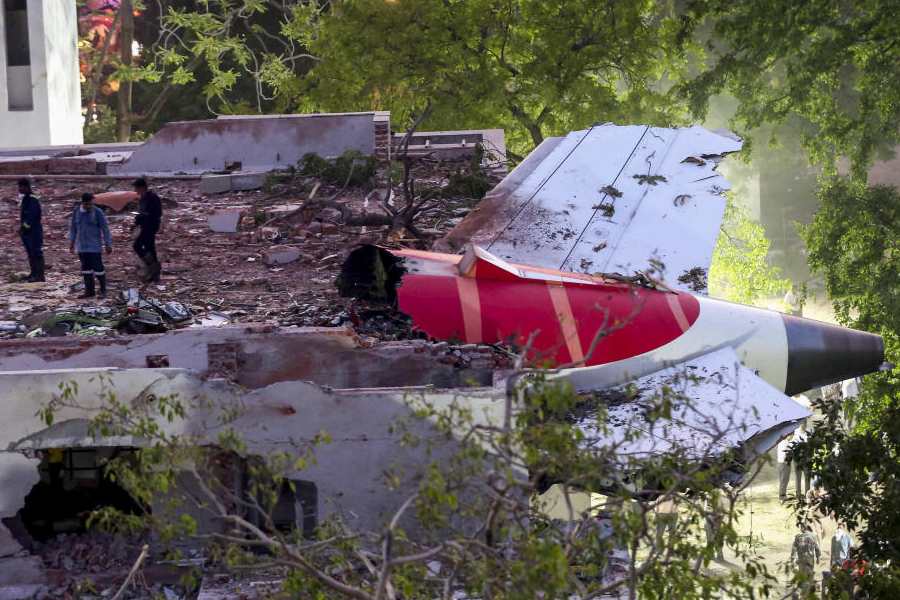 |
Washington, April 10: Manmohan Singh’s journey to the Global Nuclear Security Summit in Washington is a hark back to the days when he taught at Punjab University and at the Delhi School of Economics.
The difference, however, is that this weekend, the roles have been reversed and the Prime Minister is being tutored on the curious ways of a summit of 44 heads of state and government where a lot of the actual business will be conducted in acronyms.
US secretary of state Hillary Clinton frankly admitted to an audience in faraway Kentucky yesterday that a fortnight back even a White House reporter, who ought to know, “asked me why everyone’s eyes glaze over when we talk about arms control”.
She then answered that “discussions of nuclear issues are often conducted in a language of acronyms -- NPR, NPT, SALT, SORT, START” and went as far as to say about the upcoming nuclear summit that “it is fair to ask whether it matters to people in New York or in Los Angeles or Louisville or, frankly, anywhere else beyond Washington”.
In the run-up to the Washington summit, the office of the Deputy Assistant to the US Secretary of Defence for Nuclear Matters has compiled a list of acronyms that would easily make a little handbook when it is printed out.
These acronyms, many of which will be bandied about at the Walter E Washington Convention Center, the venue of the summit on Monday and Tuesday, include ones that are wholly unfamiliar to Presidents or Prime Ministers like Singh.
One acronym which will figure prominently in US presentations, according to officials in charge of the summit, is AFRAT: it stands for Air Force Radiation Assessment Team. Another is TREE or Transient Radiation Effects on Electronics.
Some other similar examples which will figure, at least in written documents in connection with nuclear security, include: ARG or Accident Response Group, C3I which stands for Command, Control, Communications, and Intelligence, CBRNE or Chemical, Biological, Radiological, Nuclear, and High-Yield Explosive and SSGN or Ship, Submersible, Guided, Nuclear.
In common man's language, the last acronym merely stands for a nuclear-powered cruise missile submarine. But for those involved in non-proliferation or nuclear defence work, their two days of special importance during the summit comes perhaps from a mastery over words and descriptions which even many leaders of nations cannot easily comprehend.
For them, an LLC is not a Limited Liability Company as commonly understood, but Limited Life Component, which means a weapon component that decays with age and must be replaced periodically. MoD for them does not stand for Ministry of Defence, but means “modification”, explained thus: “A Mod is defined as a change in operational capability that results from a design change which affects delivery (employment or utilisation), fusing, ballistics or logistics”.
In addition to the acronyms, the office of the Deputy Assistant to the US Secretary of Defence for Nuclear Matters has compiled a long glossary of nuclear terms which could fit into a second handbook.
An example from the glossary is “Critical Mass” which means “the minimum amount of fissionable material capable of supporting a chain reaction under precisely specified conditions”.
In this glossary, an X-Ray is not something an ordinary mortal submits to if he has a toothache or a similar medical problem. In the language of the Washington summit, an X-Ray stands for “electromagnetic radiations of high energy having wavelengths shorter than those in the ultraviolet region. Materials at very high temperatures (of) millions of degrees (which) emit such radiations”.
At hand to educate the Prime Minister in such terminology at the summit are two of India’s experts on the subject who are part of Singh’s delegation to Washington: D.B. Venkatesh Varma, a diplomat in Geneva who played a critical role in the Nuclear Supplies Group exemption for India two years ago and the joint secretary in South Block for disarmament, Gaddam Dharmendra.
The International Atomic Energy Agency (IAEA) has long had an even bigger list of acronyms which are integral to meetings at its headquarters in Vienna.
But even the Prime Minister, who is plunging into the nuclear summit with a commitment to set up an International Nuclear Safety Centre in India, may be surprised at the range of India-related acronyms that are widely used at the instance of the IAEA in global nuclear discussions.
In the IAEA’s lingua franca, a BRIT is no slang for a British person, but stands for the Board of Radiation and Isotope Techology, a division of the Indian government’s Department of Atomic Energy (DAE) set up to exploit commercially the applications of radioisotopes and radiation in the areas of healthcare and agriculture research.
Similarly, in the Indian nuclear context, a CAT is not a feline or even the Common Admissions Test for the Indian Institutes of Management. Nor is it the Central Administrative Tribunal for government servants.
It is the Centre for Advanced Technology under the DAE, set up for research and development in high-tech areas of accelerators and lasers.
Better known in this context, perhaps, are TAPS, not the common source of water, but the Tarapur Nuclear Power Station and NAPS, which has nothing to do with 40 winks, but stands for the Narora Atomic Power Station.
For ordinary Indians, the IAEA list of acronyms on India could be an eye-opener on the range and depth of India’s nuclear capabilities, which are often deliberately understated if not kept as secrets.
Instruction on nuclear acronyms may be new for the Prime Minister, but as an economist who has worked on international trade issues at the UN Conference on Trade and Development as long ago as the 1960s, he will not be altogether unfamiliar with the use of short forms and special terms in international affairs.
At the World Trade Organisation (WTO), in whose work Singh takes a direct interest, especially on India’s involvement, “Confessionals” mean bilateral meetings.
At the WTO in Geneva, a “Box” is not something into which you put your possessions: it is a category of domestic support in agriculture.
In the global trade body’s jargon, Blue box stands for: “Permitted supports linked to production, but subject to production limits, and therefore, minimally trade distorting”.
While an Amber box means “Supports considered to distort trade, and therefore, subject to reduction commitments”.
At the end of the Washington summit, it will not be a surprise if participating heads of state and government conclude that nuclear acronyms and jargons are perhaps more comprehensible than trade terms.











